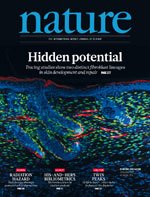Examining the Gender Gap in Research Citations
Posted on Dec 18, 2013 | Comments 0
 Previous research has shown that women in science publish less often than men and that women are less frequently listed as lead authors in scientific studies in which they participate.
Previous research has shown that women in science publish less often than men and that women are less frequently listed as lead authors in scientific studies in which they participate.
Now a new study led by researchers at Indiana University and published in the weekly journal Nature, finds that when women do publish and when they are the lead author in collaborative research, their articles tend to get fewer citations than articles published by men or articles where men are listed as lead authors.
The research examined 5,483,841 research papers and review articles with 27,329,915 authorships contained in the Thomson Reuters Web of Science databases for the years 2008-2012. The results showed that in most countries around the world articles with women in dominant author positions receive fewer citations than those with men in the same positions. The research found that women in Eastern Europe and South America tended to do better than women in other parts of the world in percentage of published papers and citations received.
The authors note that “age indisputably has a role — perhaps even the major role — in explaining gender differences in scientific output, collaboration and impact. As is well known, the academic pipeline from junior to senior faculty leaks female scientists, and the senior ranks of science bear the imprint of previous generations’ barriers to the progression of women. Thus it is likely that many of the trends we observed can be explained by the under-representation of women among the elders of science.”
The article, “Bibliometrics: Global Gender Disparities in Science,” can be viewed here.
Filed Under: Research/Study








